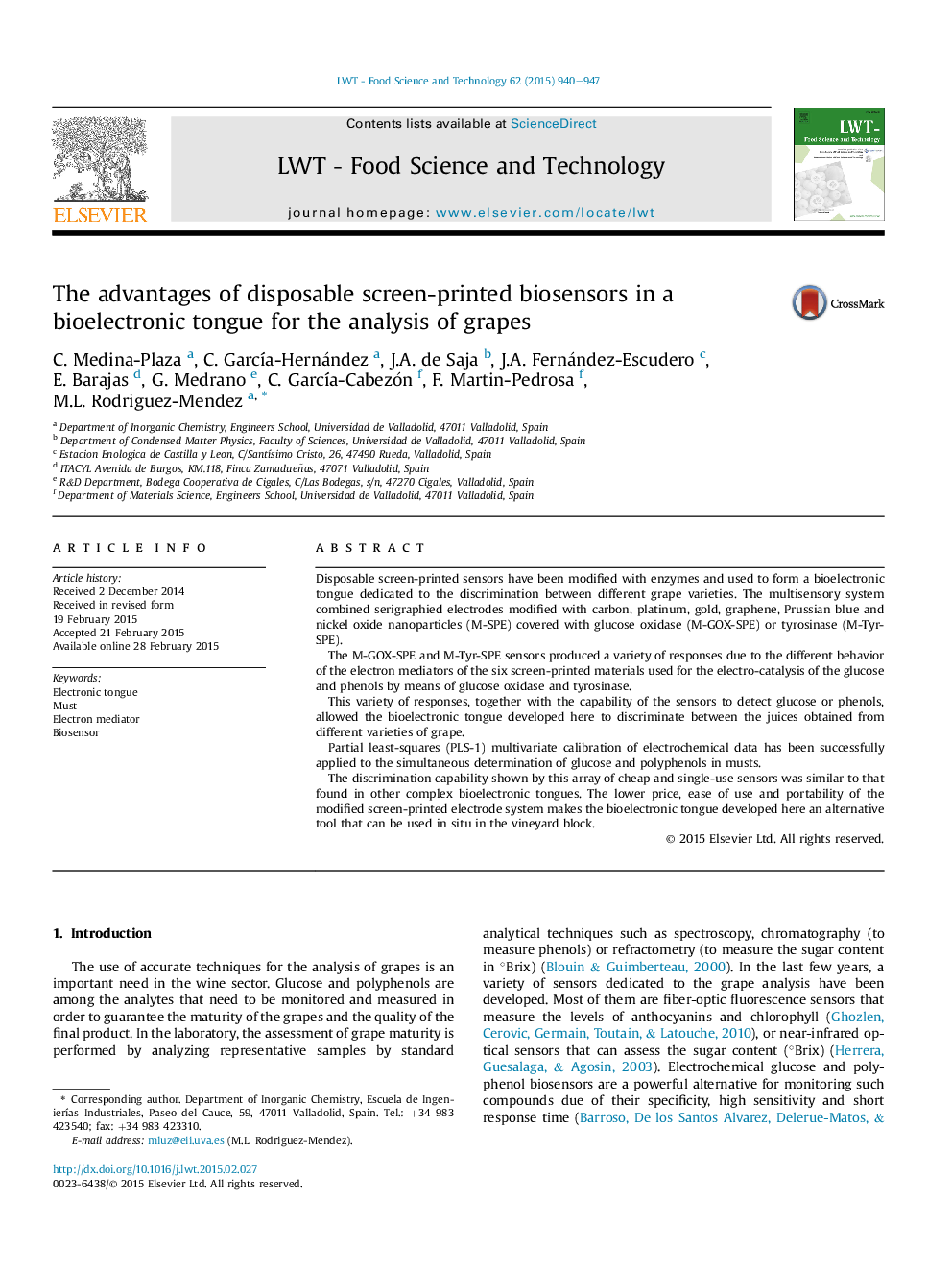| Article ID | Journal | Published Year | Pages | File Type |
|---|---|---|---|---|
| 6400589 | LWT - Food Science and Technology | 2015 | 8 Pages |
â¢A bioelectronic tongue based on screen printed biosensors is presented.â¢It can discriminate musts according to their phenolic and sugar content.â¢Sensors are easily modified chemically with glucose oxidase or tyrosinase.â¢Good cross selectivity is attained using different electron mediators.
Disposable screen-printed sensors have been modified with enzymes and used to form a bioelectronic tongue dedicated to the discrimination between different grape varieties. The multisensory system combined serigraphied electrodes modified with carbon, platinum, gold, graphene, Prussian blue and nickel oxide nanoparticles (M-SPE) covered with glucose oxidase (M-GOX-SPE) or tyrosinase (M-Tyr-SPE).The M-GOX-SPE and M-Tyr-SPE sensors produced a variety of responses due to the different behavior of the electron mediators of the six screen-printed materials used for the electro-catalysis of the glucose and phenols by means of glucose oxidase and tyrosinase.This variety of responses, together with the capability of the sensors to detect glucose or phenols, allowed the bioelectronic tongue developed here to discriminate between the juices obtained from different varieties of grape.Partial least-squares (PLS-1) multivariate calibration of electrochemical data has been successfully applied to the simultaneous determination of glucose and polyphenols in musts.The discrimination capability shown by this array of cheap and single-use sensors was similar to that found in other complex bioelectronic tongues. The lower price, ease of use and portability of the modified screen-printed electrode system makes the bioelectronic tongue developed here an alternative tool that can be used in situ in the vineyard block.
